
Share this story
- NAEP results in fourth and eighth grade reading and math show significant declines since before the COVID-19 pandemic for North Carolina. See how students fared.
- “A once in a generation virus upended our country in so many ways. And our students can’t be the ones who sacrifice most in the long run," said @SecCardona about @NAEP_NCES results in fourth and eighth grade reading and math.
|
|
North Carolina, along with the rest of the country, showed declining scores for fourth and eighth grade math and reading in the latest release of scores from NAEP (National Assessment of Educational Progress), known as the nation’s report card.
The release is the first in these subjects since 2019 and shows the impact students faced from the COVID-19 pandemic as schools around the nation and state went online to help prevent the spread of the virus.
“As your secretary of education, I want to be very clear: the results in today’s nation’s report card are appalling and unacceptable. They are a reminder of the impact this pandemic had on our learners and the important work we must do now for our students,” Secretary of Education Miguel Cardona said in a press briefing late last week. “This is a moment of truth for education. How we respond to this will determine not only our recovery but our nation’s standing in the world.”
The National Center for Education Statistics puts out the NAEP scores from every state as well as the District of Columbia, national Department of Defense Schools, and Puerto Rico (only in math).
North Carolina
North Carolina’s results largely mirrored those of the nation and the jurisdictions measured by NAEP, with declines in average reading scores for fourth and eighth graders in both reading and math.
State Superintendent of Public Instruction Catherine Truitt said in the press release that the NAEP findings are similar to what the state’s Office of Learning Recovery found when it comes to North Carolina.
“We have made strategic investments to try to address these concerns, including providing professional development for 44,000 elementary school educators in the science of reading,” she said. “We’ve also identified targeted interventions to address learning loss specific to transitioning students – those moving from elementary to middle school or middle to high school.”
Michael Maher, the state’s deputy state superintendent for Standards, Accountability, and Research, added to Truitt’s statement in an email to EducationNC.
“While important, these findings shouldn’t come as a surprise to anyone in North Carolina. The Lost Instructional Time report released in March provided us with even more comprehensive information about the impact of the pandemic on student learning,” he wrote. “We will use these NAEP results consistent with the manner in which we have used all of the student performance data available to us and will continue to strive to provide programs and resources to students who have been most impacted by the pandemic.”
Reading
Twenty-nine other states or jurisdictions also fared poorly in fourth grade reading, while 32 other states or jurisdictions declined in eighth grade reading. No states or jurisdiction did better in fourth or eighth grade reading since 2019, with one exception. Department of Defense schools were the only jurisdiction to do better in eighth grade reading.
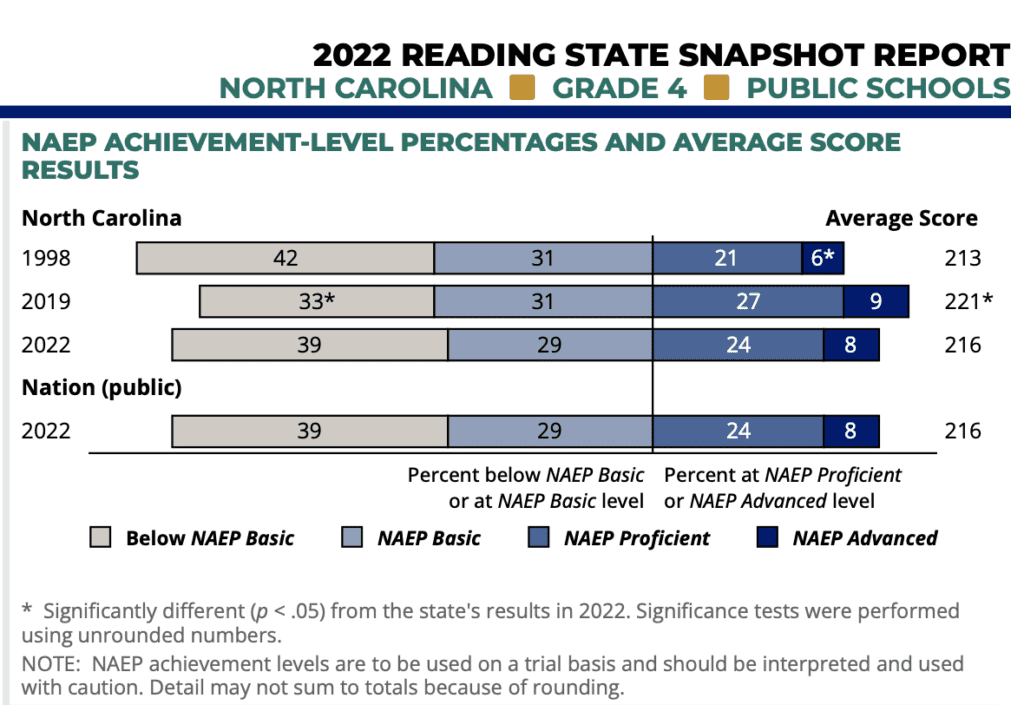

Math
Forty-two other states or jurisdictions did worse in fourth grade math, while 50 other states or jurisdictions had a decline in eighth grade. No state or jurisdiction improved in fourth- or eighth grade math from 2019.
“These mathematics results are historic. This is because they are the largest decline in mathematics we have observed in the entire history of this assessment,” said Peggy Carr, a commissioner for the National Center for Education Statistics in a press briefing last week.
According to a press release from the N.C. Department of Public Instruction, the fourth- and eighth grade average math scores for North Carolina haven’t been this low since 2000.
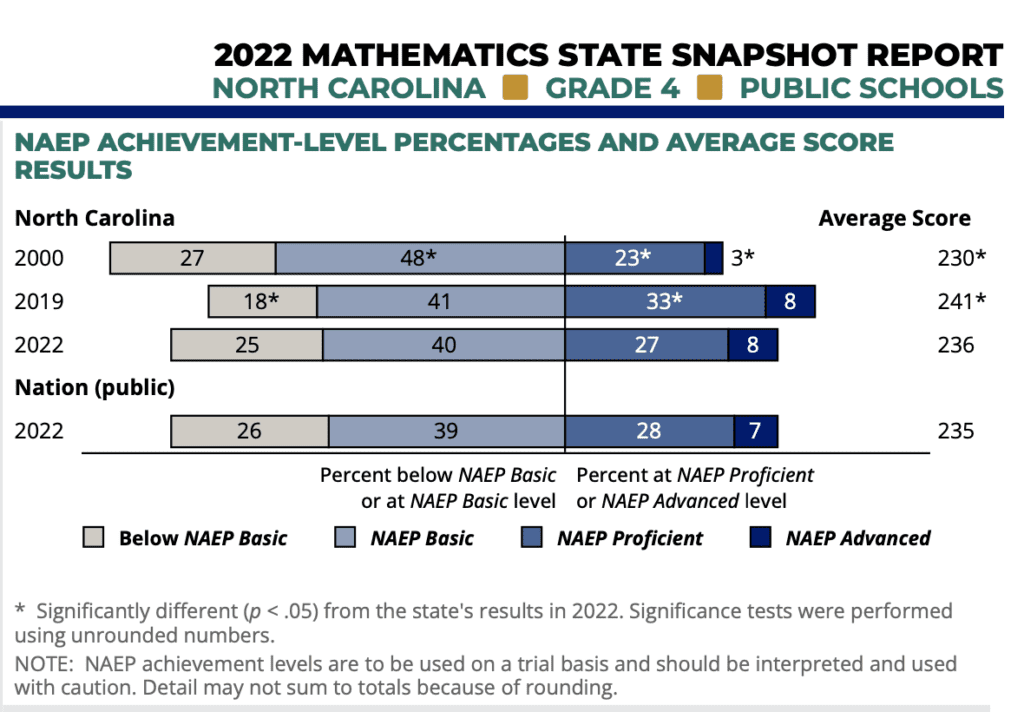
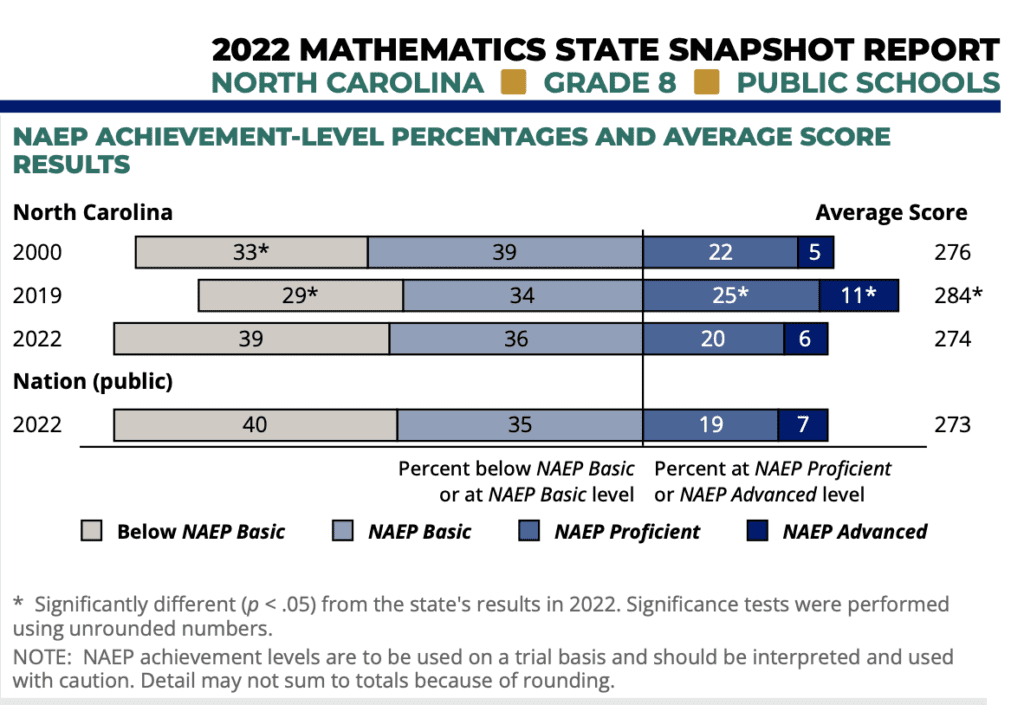
Subgroups
The NAEP data also breaks out scores by subgroup, showing persistent large gaps between certain subgroups. In most cases, those gaps remain basically the same as they were decades ago.
In fourth grade reading, Black students had significant gaps from their white counterparts, but the gaps weren’t significantly different from 1998, according to the NAEP results. There was also a significant gap between students who are eligible for the National School Lunch program and students who are not.
There was also a big gap between Hispanic and white students in 2022, but data was not reported for Hispanic students in 1998, so no historical comparison can be made.
Male students scored lower than female students by 7 points in fourth grade reading.
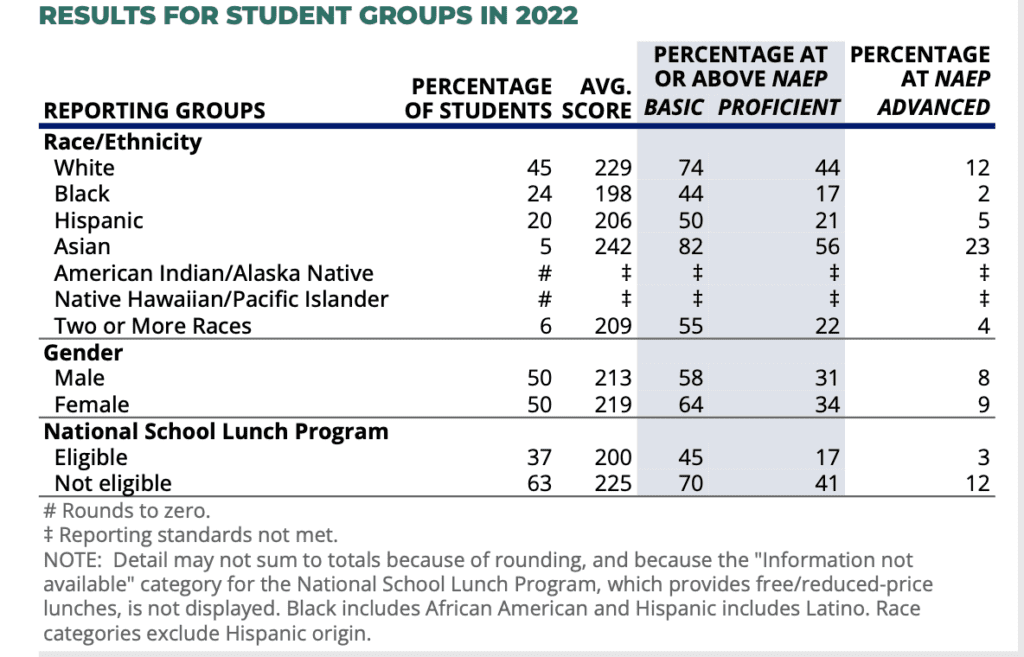
In eighth grade reading, Black students and students eligible for the National School Lunch program had significant gaps from their white counterparts, but the gap wasn’t significantly different from 1998, according to the NAEP results.
There was also a big gap between Hispanic and white students in 2022, but data was not reported for Hispanic students in 1998, so no comparison can be made.
Male students performed scored lower than female students by 10 points in this subject.

The NAEP results show that students eligible for the National School Lunch Program had an average score 27 points down in fourth grade math from where students not eligible were performing. According to NAEP, that gap has increased since the turn of the century.
While Black and Hispanic students continued to have lower scores than their white counterparts in fourth grade math, the gap is not significantly different than it was in 2000, according to NAEP.
Male and female students had similar scores.
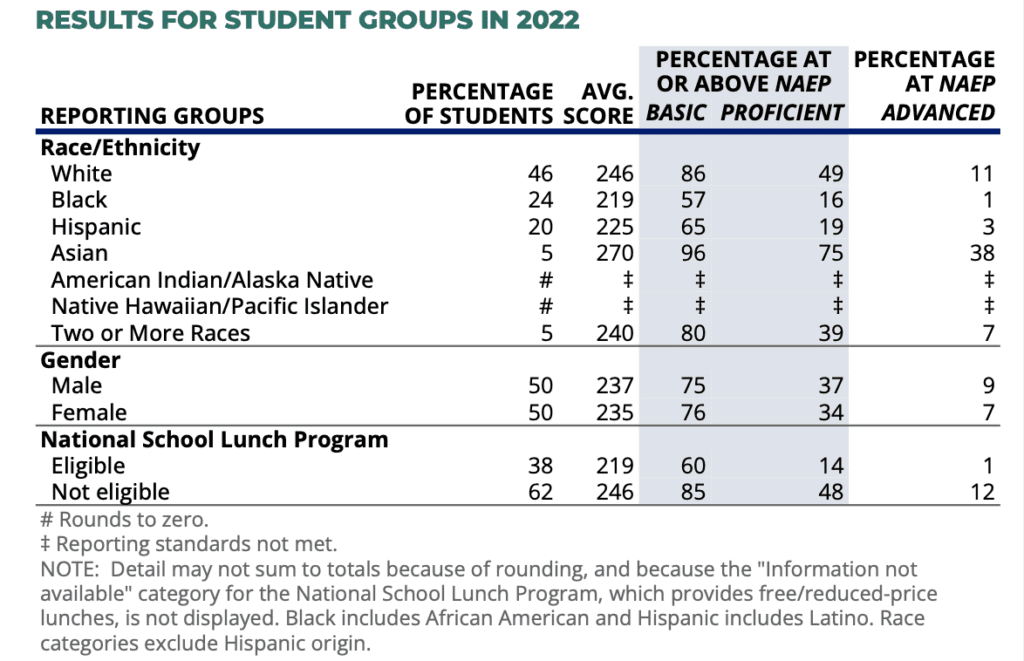
In eighth grade math, Black students had significant gaps from their white counterparts, but the gap wasn’t significantly different from 2000, according to NAEP. The same also applied to students eligible for the National School Lunch program.
There was also a big gap between Hispanic and white students in 2022, but data was not reported for Hispanic students in 2000 in this subject, so no comparison can be made.
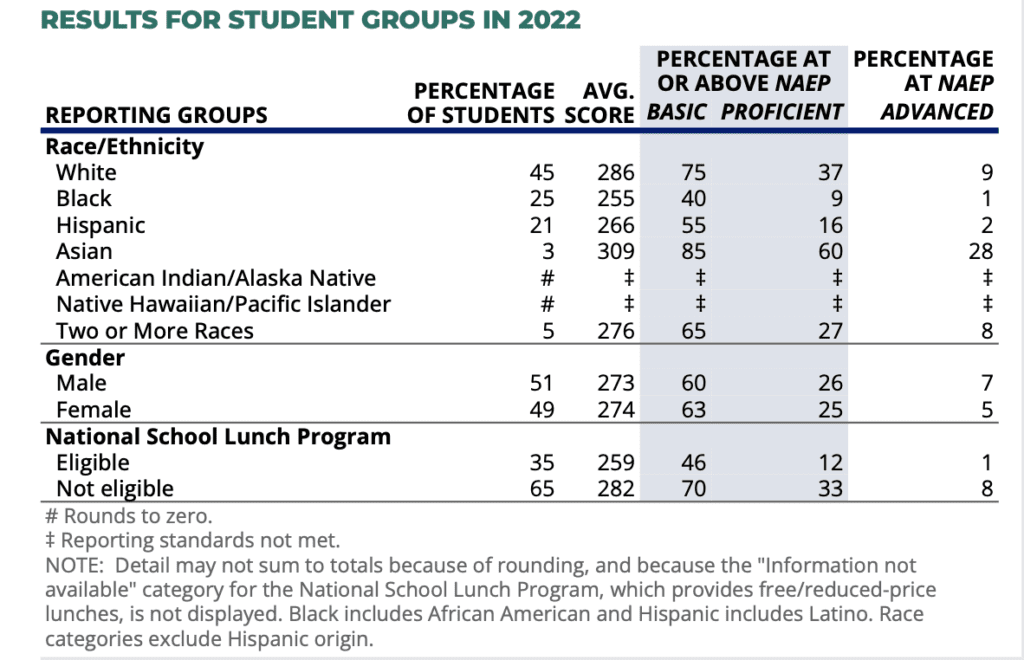
The National Council on Teacher Quality weighed in on the results today, stressing the importance of effective teachers who have been “well-prepared in content and pedagogical knowledge, reflect the racial and ethnic diversity of their students, and are supported to grow and thrive.”
“There will be an inappropriate amount of attention on who or what to blame for these devastating NAEP results,” said Dr. Heather Peske, president of the National Council on Teacher Quality, in an email. “Instead we should be laser focused on how we make this right for our children. We know students urgently need our support to recover academically, and we know that teachers are the ones who can make it happen. While the NAEP results confirmed our fears, they also underscore how much schools and teachers matter to students.”
In his remarks during the press briefing last week, Cardona stressed the importance of working to ensure students recover from the losses indicated by these NAEP results.
“A once in a generation virus upended our country in so many ways. And our students can’t be the ones who sacrifice most in the long run,” he said.
See the NAEP math results here.
See the NAEP reading results here.



